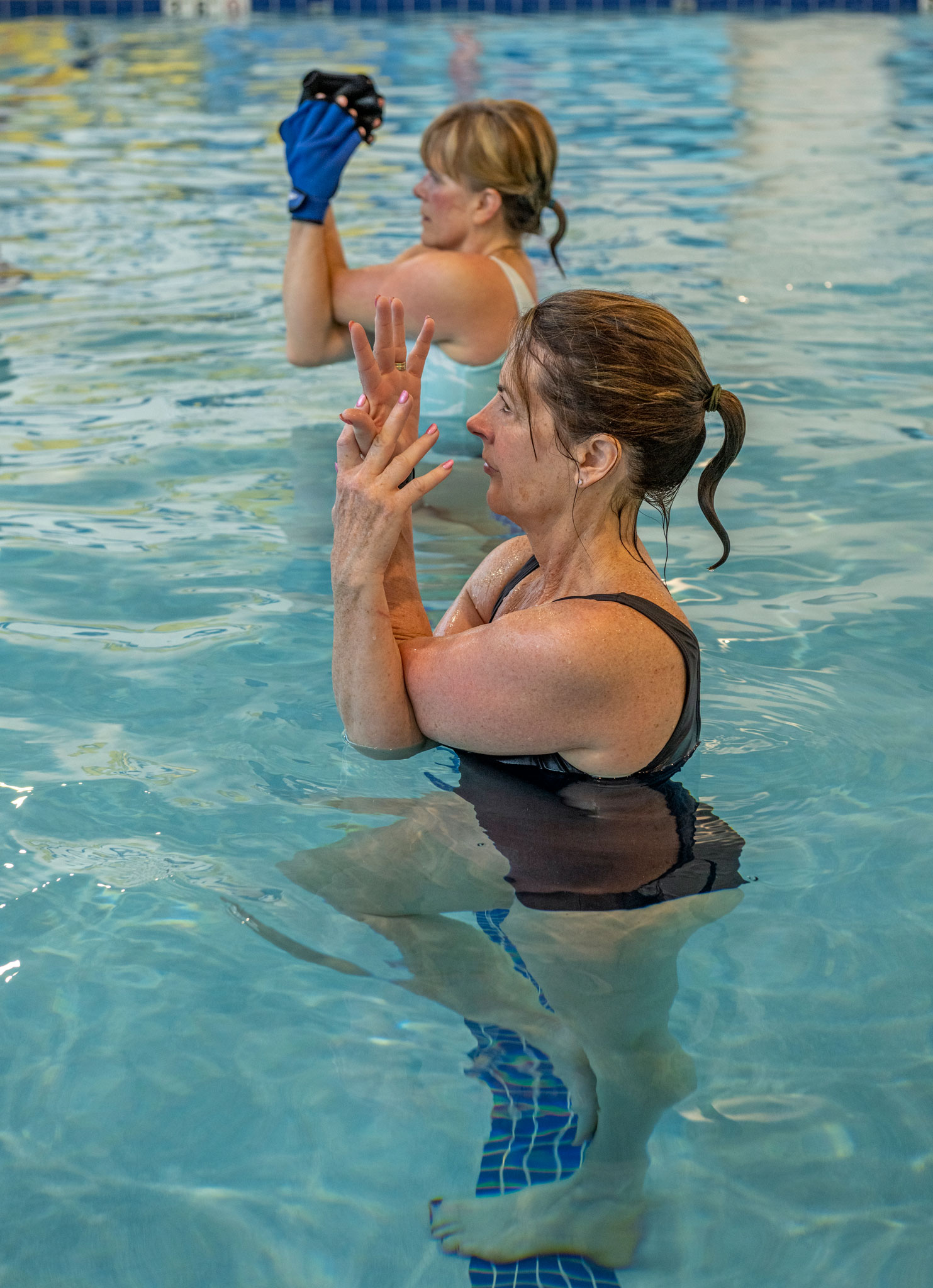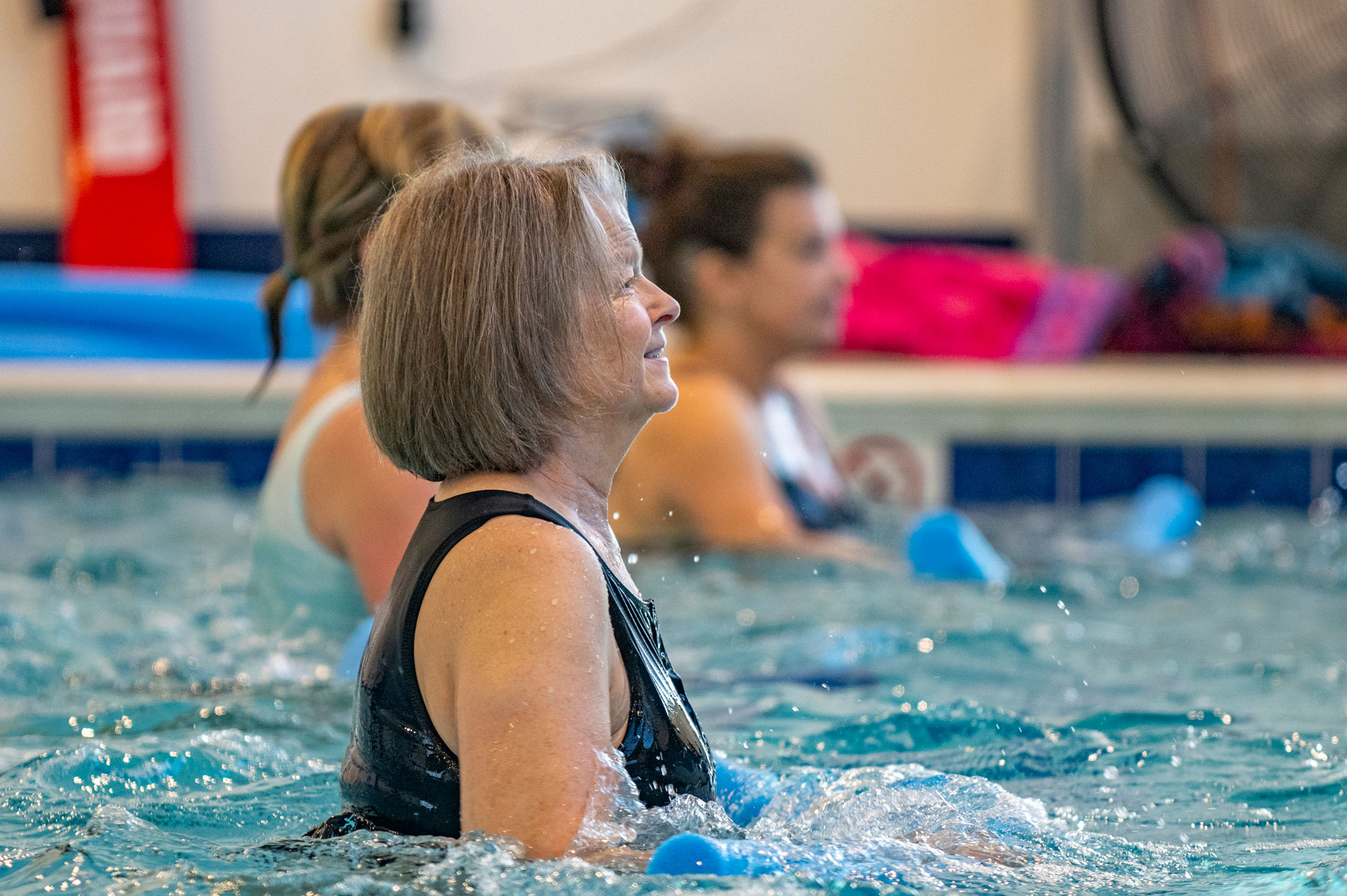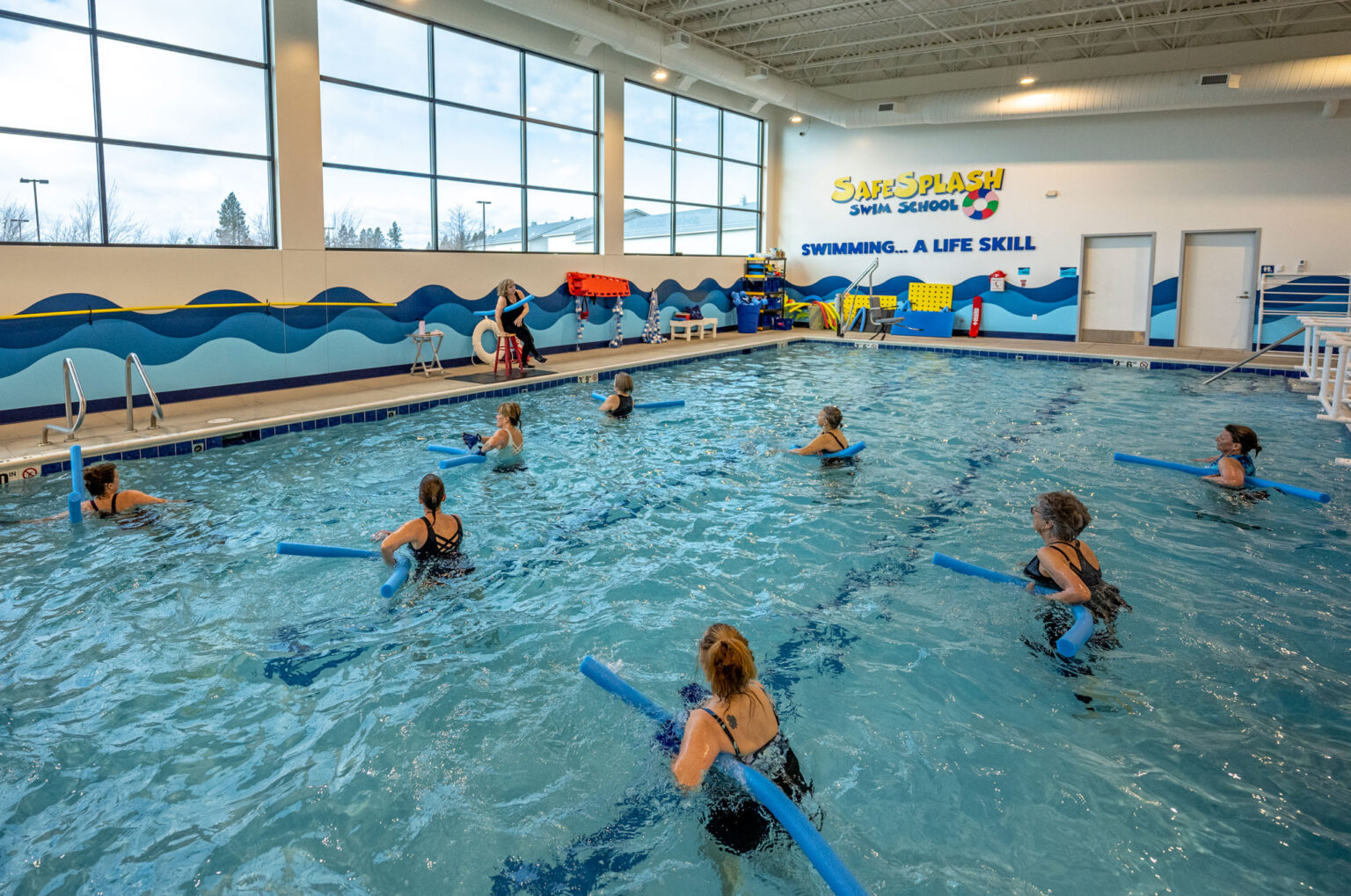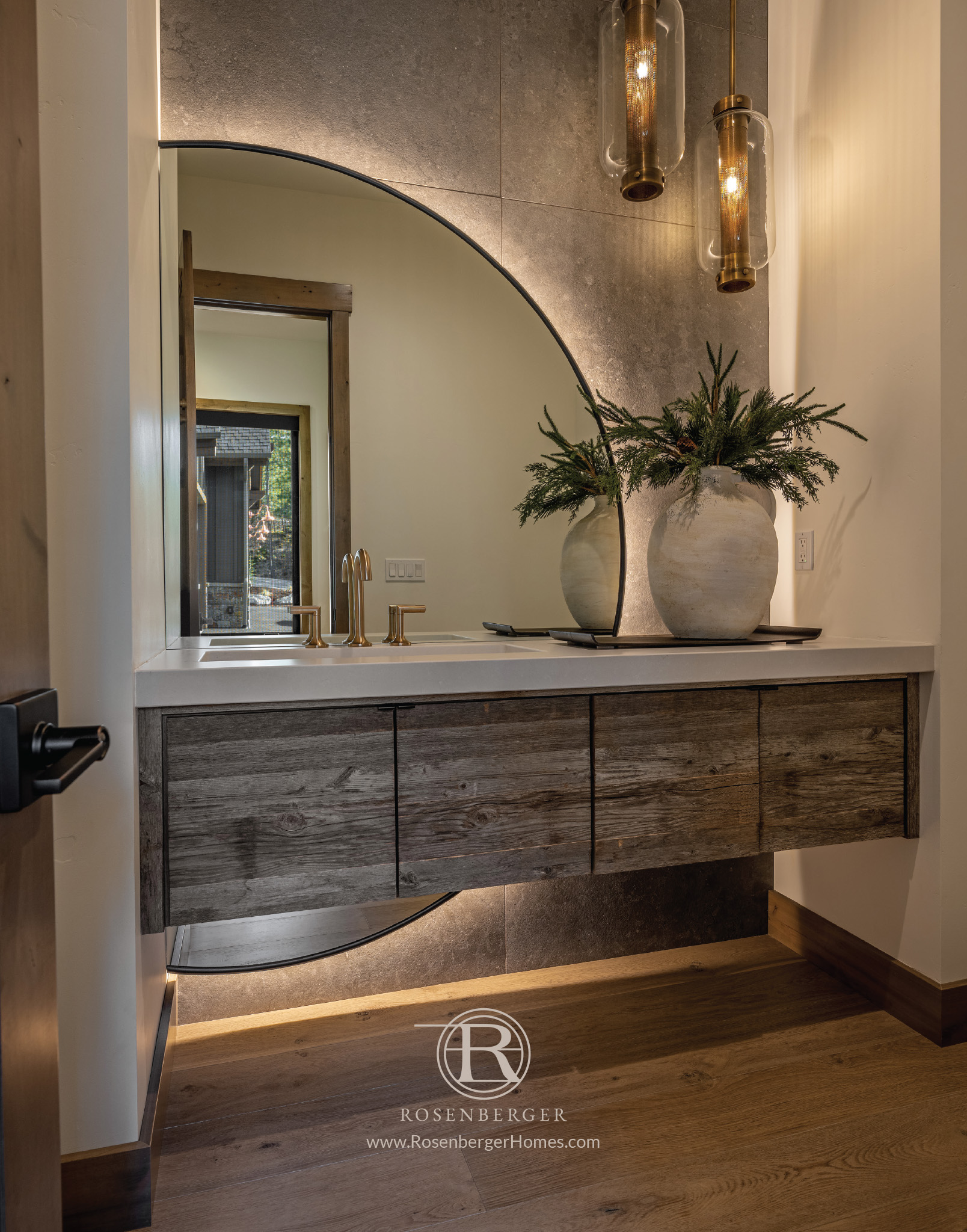The most significant attribute of any exercise worthy of long-term commitment must be enjoyment. Swimming is fun and will surely put a big smile on your face. But make no mistake, swimming is also an excellent full-body workout.
There are two primary types of exercise that can be done in the water: horizontal and vertical. Good old-fashioned lap swimming, whether it be breaststroke, freestyle, butterfly, etc. is a horizontal workout. Exercises performed while standing in the water, like running in place and jumping jacks are examples of vertical exercises.
Gina Larson offers aquatic exercise classes at the SafeSplash pool in Coeur d’Alene. She knows all too well the positive attributes of swimming, and water exercises, and how the unique properties of water provide multiple health benefits.

All body systems including the circulatory, cardiorespiratory and musculoskeletal systems benefit from being in the water. Buoyancy is the upward thrust felt on your body when you are in the pool. It helps a swimmer float, reduces body weight, reduces joint compression forces, and makes exercises easier to do.
Using resistance in the water has the power to give your muscles a makeover because water is 12 times denser than air. Using equipment like swimming gloves or water dumbbells to increase resistance will enhance your workouts. Pool noodles, kick boards and other flotation devices are versatile for suspended movements, stretching and strengthening exercises.
When you move in the water, you gain strength. Hydrostatic pressure is the gentle squeeze the water gives your body. The pressure will decrease swelling and act as a compression device. During vertical exercise, pressure increases on the lower body that is deeper into the water, giving a tremendous venous return to the heart. Being in the water helps circulate the blood in your body more efficiently. It makes your heart stronger which in turn allows it to work more efficiently.

The goal of traditional swimming is to streamline and glide through the water with rhythmic breathing. Swimming burns more calories per hour than aerobics and cycling and requires stronger cardio fitness to sustain lap after lap. As beneficial as swimming laps can be, by comparison, aqua fitness classes are a better all-around exercise because they use a greater variety of muscles. The goal of water exercise is the opposite of streamlining. The focus is on moving like a barge, to move the water, displace the water, and take the water with you as you move. The water camouflages the body while performing the workout so you can work to your potential without body issues and fears. Water is the greatest equalizer and during exercise, you will also experience the feel-good factor of water.
Besides being a basic life skill, swimming provides many varied and significant health benefits. However, water exercises can appeal to both the swimmer and non-swimmer.
Resistance is the main reason to choose the liquid gym, but even though it’s a significant workout, being in the water is also relaxing and peaceful. It improves flexibility, and balance, and reduces stress. It’s a healthy activity that’s well suited for the older body and the young at heart. N
As Featured in the Nspire Magazine 2023 Summer/Fall Edition
By: Jill Buckland
Photography by: Joel Riner



